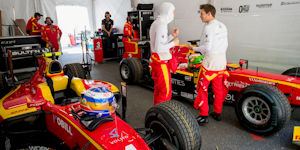| 1. The Red Bull Ring is located in the Styria region of Austria, at the foot of the Alps.
2. A special feature of this racetrack is the difference in slope angles, with a maximum uphill slope of 12% and a maximum downhill slope of 9.3%.
3. The Red Bull Ring's mixture of long straights and technical, medium-speed sections call for a compromised setup.
4. The downhill sections with curves are very tricky, especially if the track is wet.
5. Last year, Racing Engineering's driver Jordan King won the sprint race in Austria.
6. Turn 5 and 6 are almost symmetrical left hand corners.
7. Last year at the Red Bull Ring, Racing Engineering's driver Norman Nato set the fastest lap of the second race with a time of 1:22.155 on lap 28.
8. The on-track action at the Red Bull Ring takes place in the shadows of a giant Red Bull sculpture, which sits in the middle of the infield section at corners 4, 5, 6 and 7.
9. Corners 1, 2 and 3 are great overtaking areas, as they all have a long straight before them, giving drivers a good opportunity to out-brake their opponents. 10. After turn 8, named after Jochen Rindt, cars drive downhill to the Red Bull Mobile corner and onto the 626m start finish straight. |











